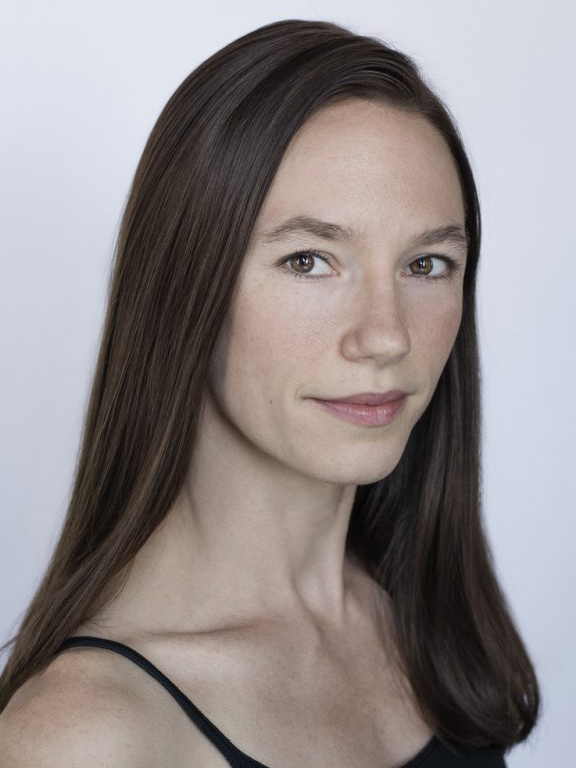Dance and the Digital Essay

Teacher-Scholar Postgraduate Fellow, Janice Lancaster
Course: 20th Century Modern Dance History
Number of Students: 33
Term: Fall 2018
Duration: 15 weeks
Designer: Brianna Healey Derr
Question
Who’s your favorite rebel?
Answer
At the moment, my favorite rebel is Elizabeth Streb.
She is a contemporary artist who is choreographing gravity. What does a body do when it is free falling? So we have all of these ideas and concepts of dance and hers is closest to Physics, literally, bodies doing Physics. So, it has nothing to do with what I think I specialize in and as a performer, the subtleties and gestures, well, this is just the opposite. It’s about large forces in our life.
Project Description
In groups of four, students are assigned a key figure in modern dance history to present to the class. The format is half digital essay (4-6 minutes) and half Q&A/Engagement (6-8 minutes).
The digital essays provide an introduction to the dance artist and focus on three pivotal moments in their life. Students are encouraged to include excerpts from class readings and to collect video documents or other media (artwork, journals, interview footage, photos, music).
Through a Q&A/Engagement format of their choosing, the groups are to demonstrate a comprehensive knowledge about their artist. Movement exercises and performance are welcomed.
Purpose
The purpose of the Multimodal Group Presentations (digital essay + Q&A/Engagement) is to convey dance inspiration through vivid visuals, sounds, and story; thereby providing a learning process which parallels the oral tradition – as in the ability to receive and pass along knowledge from person-to-person through immersive sensory experiences and technology.
Learning Goals
Learn to research and communicate through a multi-modal/digital essay format (script, images, audio, design and editing).
Practice collaboration and group time-management; working from others’ ideas, learn to delegate, acquire new skills using technology, and step into roles that best support the group.
Learn to engage the class with thought provoking prompts, immersive exercises and/or performance.
Role of Academic Technology
Brianna Derr introduced the concept and theory of the digital essay and offered consultation on how each group can scaffold their process towards building their digital essay.
Technology
Where students record:
https://is.wfu.edu/one–button-studio
Editing software:
https://software.wfu.edu/search/spark
Content Resources:
ZSR Dance History Research Resources:
https://guides.zsr.wfu.edu/c.php?g=34412&p=220783
Dance materials are concentrated on Reynolds 7, at GV1580-1799.4.
ZSR Performing Arts Databases:
https://zsr.wfu.edu/databases/subject/performing-arts/
ZSR DVD Collection
Copyright safe content
https://search.creativecommons.org/
ZSR Kanopy
Youtube/Vimeo
Jacobs Pillow Dance Interactive https://danceinteractive.jacobspillow.org/
The NY Public Library Digital Collections
https://digitalcollections.nypl.org/collections/dance-in-photographs-and-prints#/?tab=about
Target Skills
Outcomes & Perspectives
Showcase
Student’s Perspective
“I had never created a multi-modal project before, and it was actually a lot more fun than making a regular project/powerpoint. I will say that due to my inexperience, the technical aspects were a bit tricky but I am excited to use this in the future – thank you!” -Austin Offnick
“This was the first fully collaborative video I’ve worked on, and the first video I’ve participated in the making in, in years. It was beneficial for me to refresh my memory on iMovie, and it was nice to learn about Meredith Monk.” -Marisa McGrath
“Before this project, I didn’t know what a digital essay was.” -Ivana Raca
“I learned new techniques for digital essays including the use of narrative over videos and how to edit video. Additionally, I greatly expanded my knowledge of Charles Weidman and his impact on the dance world.” -Tucker De Sanctis
“I learned to work with different schedules and different people and their ideas.” -Haris Shehzad
Instructor’s Perspective
Students grew aware of how they were practicing collaboration and choreographic thought as they weaved together vivid visuals, sounds, and story for their digital essays. As audience, we gave presenting groups feedback about their staging choices, such that each physical choice was potential for discussing intent.

